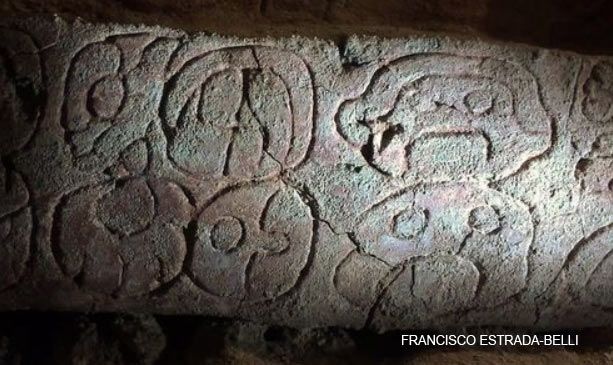Archaeologists Discover Massive Maya Frieze Found in Guatemala
Archaeologists have discovered a giant Maya frieze in the buried city of Holmul in the Peten region of Guatemala. It depicts a mythological setting with a ruler sitting atop the head of a Maya mountain spirit.
The frieze, which measures 8 metres by 2 metres, is one of the best preserved examples of its kind. There are even traces of red, blue, green, and yellow paints still visible, and there are no missing parts to it, only a small faded corner which is close to the surface.
"It gives you an idea of how intricate and ornate these sites that we are excavating must have been during their apogee," said Maya archaeologist Marcello Canuto said. "These sites must have been a feast for the eyes when they were inhabited."
The section of the temple at Holmul where the frieze was found dates back to about 590 A.D., which corresponds to the Maya classical era, a period defined by the power struggles between two major Maya dynasties: Tikal and Kaanul. The two kingdoms competed with one another for resources and for control of other, smaller Maya city-states. Until now, however, it had been unclear which dynasty had control over Holmul, but the newly discovered frieze reveals that the temple was commissioned by a ruler of a neighbouring city called Naranjo, which was a vassal city of the Kaanul kingdom.
"We're now beginning to appreciate how all these hierarchical levels of sites were involved in a larger political game that put them on [the side of either Tikal or Kaanul]," Canuto explained.
Holmul occupied a strategic position for both kingdoms. The city lay along the best east-west route between the Tikal dynasty's capital city and the coast. It also lay along a north-south route between the Kaanul capital city and the Guatemalan highlands that did not pass through Tikal territory. By controlling Holmul in the east and another city in the west, the Kaanul dynasty was able to access precious resources in the Guatemalan highlands without going through the capital city of its rival.
The entrance tunnel to the pyramid in which the frieze was found has been reburied to keep the humidity and climate around it stable in order to continue to preserve it. Eventually, the site will be open to the public so that people will be able to visit it.



















